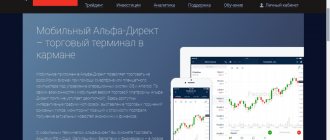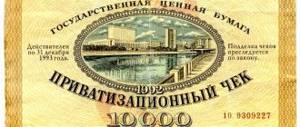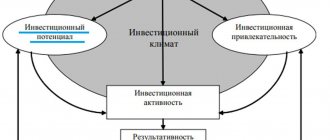Licensing investment activities is a complex business task, where it is simply impossible to do without professional help. When an organization plans investment activities in the securities market, investments in real estate, or other projects, it is necessary to undergo mandatory licensing.
Our lawyer will help on the issue of waste licensing, licensing of stores and production, the problem of certification: legal assistance will be provided to you professionally and on time.
History of the AIF
The first joint-stock investment funds appeared in the 20-50s. XIX century in Belgium, Switzerland and France. At the beginning of the twentieth century, they became a noticeable phenomenon for Great Britain and the USA, and an active increase in their number occurred in the 20-30s.
Reference! The popularity of AIFs at a time of rapid development of capitalism in Europe is quite understandable: these structures announced to investors greater income than dividends from shares of the largest corporations, interest from bonds and bank deposits. They were also suitable for average investors who were unlikely to be able to build a large portfolio on their own by buying many stocks.
A conditional analogue of equity funds in the world today can be considered mutual funds (mutual funds) in the USA and variable capital funds (SICAV) in Europe. The first mutual fund, Massachusetts Investory Trust, appeared in the United States in 1924. At the beginning of 2021, there were about 35 thousand such structures operating in the world.
In Russia, the cornerstone of the development of AIFs was the Federal Law “On Joint Stock Companies”, adopted in 1995 (FZ-208). In 2001, the Federal Law “On Investment Funds” finally approved their status (FZ-156). In 2015, there were four AIFs in Russia, and according to the Central Bank of the Russian Federation, at the end of 2021, there were only two joint-stock investment funds from one company operating in the country.
How many funds do they manage? Capitalization is approximately 1.5 billion rubles, which, however, is extremely small compared to mutual funds, the volume of funds of which at the end of 2021 was 4.5 trillion. rubles The inflow of funds into mutual funds alone for 2021 was equal to 1.1 trillion. rub., which is almost 1000 times more than the capitalization of joint stock funds.
Table 1. Indicators for joint-stock investment funds for the 3rd quarter of 2021*
| Name of joint-stock investment fund | Name of management company | Net asset value as of September 30, 2019 (RUB) | Number of outstanding shares as of September 30, 2019 (pcs.) |
| Public JSC "Investment Fund "Childhood-1" | JSC "Managing | 1 079 382 506,01 | 24 880 069 |
| Public JSC "Investment Fund "Zashchita" | JSC "Managing | 415 389 903,94 | 7048 |
* Data source: Statistics of the Central Bank of the Russian Federation https://www.cbr.ru/RSCI/statistics/
The concept of AIF and its functioning
We can try to identify the definition of a joint-stock investment community with the concept of joint stock company. The distinctive essence of the activity of the former lies in the investment of the fortune that belongs to him, which is converted into valuable documents and other items. An open-ended fund cannot engage in any other business activity, and the rules for its creation and mobilization of depositors' money are regulated by the legislation on open joint-stock companies and on investment funds. It turns out that renting, for example, office space in the AIF building, as well as cases of distributing specialized literature, will be considered a violation of activity and will entail sanctions.
The direction of activity of an open company informs about the legal status of a legal entity. This may indicate some rules that must be followed by law:
- The company can carry out activities only after registration and registration with the regulatory authority;
- a license must be obtained after checking the activity for compliance with the requirements of the law and constituent documents.
The company's shareholders, being managers, have their share of the authorized capital, which is formed at the expense of their capital. The difference between AOOT and other communities is that the open type of organization allows you to have an unlimited number of founders who were able to purchase shares by exchanging their property. In turn, the monetary capital of the AIF grows immeasurably, as shares are issued and sold to new buyers. The minimum amount of authorized capital can be 100,000 rubles, although this only means that its value is a very significant indicator.
The larger the authorized capital of an OJSC, the higher the ability to attract investors from an unlimited range is assessed. According to some data, the recommended unit of a reliable and developing community should be about 5,000,000 rubles.
Joint-stock investment funds have the right to place their shares through public subscription among an unlimited number of investors. An exception may be qualified investors who do not have the right to acquire a part in the authorized capital in this way. The list of such persons is open; it can be supplemented on the basis of the Federal Law on the securities market. A member of the company, when purchasing documents of this individual investment fund, is obliged to pay their full cost, otherwise cannot be acceptable.
A joint stock investment fund has a main governing body - this is the general meeting of shareholders, regulated by the organization’s Charter and held annually. The deadline depends on the end of the financial year and should be set so that the meeting is held no earlier than two months before the end of the financial year and no later than 6 months after its end. The AIF provides for voting by shareholders in their absence.
Creating a mutual fund
Features of creating a mutual fund depend on its type. However, the differences are minor. Let's consider the stages of creating a fund using the example of a closed mutual fund:
- Submitting an application, PDU and documents on founders to the Federal Financial Markets Service for the purpose of state registration. Registration will take a month.
- Approval of papers regulating the activities of the fund.
- Accreditation if qualified investors participate in the fund.
- Opening of transit, settlement, personal and current accounts.
- Opening a company account for safekeeping of securities.
- Acceptance of contributions to the fund.
- Transfer of shares to investors.
- Approval of the report on the completion of the creation of the mutual fund. This must be done no later than 5 days from the date of issue of shares to investors.
- Sending reports and changes in the rules of trust management to the Financial Markets Service of the Central Bank. This must be done no later than 5 days from the date of issue of shares to investors.
- Registration of changes in rules. Conducted within 5 days from the date of submission of documentation to the Federal Financial Markets Service.
- The final stage is the publication of information about changes to the rules. This must be done within 10 days from the date of submission of documents for registration to the Financial Markets Service.
Main functions of funds
A joint-stock investment fund (AIF) is a type of open financial company of shareholders, which is engaged exclusively in investing capital in shares and bonds, as well as other objects provided for by the current legislation of the country. The definition of “open” means that anyone can become a participant.
Why invest money in this organization if you can buy shares of a company or invest in real estate, you ask. The answer is simple - you will not need to draw up a scheme and plan for investment, you will not need special knowledge, analysis of the sector of economic activity and the part of the market to which the investment area belongs.
Basic provisions
In the Russian Federation, the main regulatory aspects of this form of organizational activity are defined at the legislative level.
The main document is the Federal Law “On Investment Funds”.
The regulatory document specifies the aspects and main provisions of joint-stock and mutual investment funds. So let's look at the definition.
Definition 1
A joint-stock investment fund (hereinafter referred to as AIF) is a joint-stock company whose activity is, in exceptional cases, investing property on stock markets, exchanges in securities, and it is important that the name contains a reference to the AIF or IF.
It is important that with this type of activity it is impossible to carry out other types of economic and entrepreneurial activities while registering as an AIF.
Based on these provisions, the second important legal document regulating the activities of these organizations is the Federal Law “On Joint Stock Companies”.
However, an AIF differs from a simple joint stock company (or PJSC at present) by considering its features.
Charter and investment declaration
According to the law, the main and only constituent paper of a joint-stock fund is the charter. No other documents are required at the initial stage, and all persons related to the investment fund are obliged to follow the terms of the charter. The charter defines the system of functioning of the community, and also stipulates the norms of relations between shareholders, describes all the basic information about the fund and dispositive norms.
According to current legislation, the charter must include the following information:
- company name;
- open type of joint stock company;
- name of the document and company;
- official address;
- names of branches and basic information about them;
- detailed information about securities (category, price, quantity);
- rights of ordinary and preferred category shareholders;
- detailed information about the rights and responsibilities of management bodies;
- features of investor meetings and rules for adopting resolutions.
In addition to the basic information required, the charter may also include additional information. For example, the document may limit the number of shares owned by one investor or the number of votes possible for one investor.
Along with the charter, an investment declaration, which is not a constituent document, is also a mandatory document. This paper is less formal in nature and must include the names of all investment objects, a description of the goals and risk forecast of the fund, and asset requirements. Like the charter, the investment declaration is approved at a general meeting of investors or at the board of directors.
At its core, the declaration allows potential investors to choose a joint-stock investment fund in whose property they want to invest their own funds. A carefully thought-out and correctly drafted document will allow a potential investor to make sure that the community he has chosen will not be able to change the investment object over time, and his funds will be relatively safe.
AIF vs. JSC
The essence of joint-stock investment funds is most clearly manifested in the process of comparing them with joint-stock companies (JSC) and mutual funds.
First, let's compare them with joint stock companies.
There are many differences here; we will list only the main ones that lie, so to speak, on the surface.
Firstly
, it is vital for joint stock investment funds to obtain a license (special permission).
This extends the registration period and imposes additional costs on AIFs.
Secondly
, for AIFs the range of activities available for implementation is legally limited, about which the charter must contain a special note.
The creation of joint-stock mortgage and venture funds is prohibited.
Third
, all property of the AIF must be physically divided into:
[1]
property that can be used for investment purposes (the so-called
investment reserve , which makes up the lion's share of all property and is necessarily transferred to the trust management of a third-party management company), and
[2]
property without which the fund cannot physically exist (premises, furniture, salary fund for management personnel, office and transportation expenses, costs for maintaining infrastructure, etc.)
Fourth
, in relation to AIFs, more stringent requirements are provided in terms of the formation of the authorized capital (when placing shares, their full payment is required, which, and here there are some nuances, is allowed only with money or property listed in a special document -
the investment declaration ).
Fifthly
, AIFs are prohibited from issuing preferred shares, as well as private subscription to shares.
The legislation establishes a direct ban on the sale of AIF shares to a registrar, auditor, depository or appraiser with whom the AIF has a contractual relationship on the substance of their activities.
A license for investment activities cannot be granted if:
- The documents submitted by the applicant contain incomplete or unreliable information;
- The applicant does not fully comply with the license conditions;
- The documents submitted to the licensing authority do not meet certain requirements.
A license for investment activities can be extended, reissued, renewed, suspended, or canceled at the request of the licensee or after the results of a scheduled, as well as unscheduled, inspection in the manner prescribed by law.
Licensing of investment activities is subject to state duty in the amounts established by the legislation of the Russian Federation.
What is an investment fund
Investment fund
is an organized financial structure (
company
) that professionally manages the funds of other investors, as well as its own. The scheme of operation of such a fund is very simple:
- An organization (fund) is created with a certain authorized capital from the founders;
- Small investors contribute funds that are accumulated in this fund into a single portfolio;
- The portfolio is managed by experienced managers or a team of managers who analyze the market and execute trades;
- The fund's profit or loss is divided among investors in proportion to the funds invested.
Some types of funds may charge commissions or fees to managers, but not all.
Disadvantages and negative reviews about investment funds
Investing in investment funds has obvious advantages: the investor does not need to independently search for profitable investments. For example, delve into currency quotes and waste time tracking the real-time index of USD, EUR USD, GBP USD, USD JPY, USD CHF, USD CAD, NZD USD, AUD USD, USD RUB, EUR RUB, USD UAH, USD BYN, USD SEK, USD NOK, USD CNY, EUR CHF, BTC cryptocurrencies, etc.
But there is also a minus in this : the investor’s earnings depend on the quality of the investment fund’s work . You cannot influence the chosen goals in any way. The trustees decide for you what and when to buy and sell. As a result, investment funds often earn 3%-5% per year, which is significantly less than simple and independent investing in stock (stock) indices - Dow Jones 30, S&P 500, DAX 30, FTSE 100, NIKKEI 225, NASDAQ-100 and etc.
Mechanics of work
Many people confuse this type of organization with mutual funds. A mutual fund is not a joint-stock company, and this makes a number of differences. For example, a mutual fund participant buys shares, which are essentially a product of the managers’ activities.
AOF participants, accordingly, buy shares of the company itself. The difference is obvious - profit from the share will be received when it is sold at an increased price, while AOF, by issuing its certificates, undertakes to pay dividends to participants.
Perhaps the most striking global example of such an organization can be considered Berkshire Hathaway of Warren Buffett and Charles Munger. Yes, this is not a fund, but an independent corporation, but this is precisely the principle that is applied there.
You buy shares of a corporation, it receives money from you, with which it buys certificates of ownership and debt obligations of other firms, companies and the state. Profits generated from these operations are distributed to shareholders in the form of dividend income.
Differences from a joint stock company and the main features of a joint stock investment fund
- An AIF may carry out and conduct its activities only if it has a license.
- carrying out other types of economic activities is prohibited.
- sufficient funds are required in order for a license to be issued (according to the law, the amount of own assets (funds) as of the date of application or registration must be more than 35 million rubles). That is, there is a relatively high barrier to entry into the market.
- various groups of appraisers who have an agreement with a specific AIF cannot, by law, also be shareholders of this AIF.
- AIF has the right to issue and place only its own registered shares. And this is a very important point.
- reserves are transferred to management companies (MCs) for management.
- Each specific AIF must have an official Internet portal.
- there is a mandatory reference in the AIF's charter to the fact that the activities of the AIF are investing in property, which is indicated in the investment declaration.
Such a document is drawn up and approved by the board of directors or at a general meeting of shareholders.
The main documents of such an organization are the Charter and investment declaration.
At the same time, it is possible to make changes to these documents, subject to the consent of the shareholders. However, in general, many provisions are regulated by the Federal Law “On Joint Stock Companies”, but relying on the features presented above.
Addition for the depository and management company planning to conduct investment activities
For enterprises of this type, the following are added to the main package of documents:
- information about the presence of an internal control service;
- rules for the work of this body at the enterprise;
- full information about shareholders holding more than 5% of common shares.
The permit is issued for a period of up to 5 years with the possibility of re-issuance and extension, subject to compliance with current regulatory requirements. Review of an application with a full package of documents by the Federal Financial Markets Service takes up to 45 days.
State regulation of AIFs in Russia and abroad
Joint-stock investment funds manage the funds of investors - organizations and citizens. To protect the interests of the latter, Russian legislation establishes a number of requirements for AIFs (Article 3 of Federal Law No. 156).
- The volume of the organization's own funds should not be less than the limit established by the Bank of Russia.
- The fund's investors cannot be registrars, auditors, depositories, as well as appraisers who serve the AIF under an agreement.
- Property is divided into two groups: funds for investment and capital for the functioning of the fund.
- Reserves allocated for investment in securities and assets are transferred to the management of a specialized organization (SA).
- The AIF opens a segregated account with the bank for conducting financial transactions, to which the CA has access as a trustee.
A joint stock fund that meets all the above requirements receives a license from the Central Bank of the Russian Federation - the only legal basis for activity. The Bank of Russia is the government body responsible for the regulation and supervision of AIFs.
Table 2. Regulation of AIFs in Russia, USA, Europe
| A country | Main legal act | Regulatory and supervisory authority |
| Russia | Federal Law of November 29, 2001 N 156-FZ “On Investment Funds” | Bank of Russia |
| USA | Investment Company Act, 1940 | Federal Securities and Exchange Commission |
| European Union | Directive No. 2004/39/EC | European Securities Surveillance Authority |
- In the United States, the basis for regulating the activities of such structures is the Investment Company Act, 1940, and the central supervisory authority is the Federal Securities and Exchange Commission (SEC).
- In European countries, the basis for the legal regulation of joint-stock funds is formed by Directive No. 2004/39/EC of the European Parliament and of the Council of the European Union “On financial markets” (Directive 2004/39/EC of the European Parliament and of the Council of April 21, 2004), functions are administered by the European Securities Surveillance Authority.
Structuring investment funds: what do potential investors and managers need to know?
With the development of the venture industry and alternative forms of investment in Russia, more and more venture funds and private equity funds are appearing. They are created by both institutional and private investors, as well as large corporations. In what organizational and legal forms can an investment fund operate? What should be considered when creating it? What factors should investors consider?
Says:
Maxim Korostelev,
Ph.D., Chief Lawyer of Russian Venture Company JSC
The legal definition of an investment fund is contained in the Federal Law of November 29, 2001 No. 156-FZ “On Investment Funds” (hereinafter referred to as Law No. 156-FZ), which regulates the creation and activities of investment funds. Meanwhile, in practice, venture funds and direct investment funds are created not only in the forms provided for by Law No. 156-FZ.
The definition of an investment fund is much closer to practice, which is contained in Decree of the Government of the Russian Federation of December 22, 2020 No. 2204. It lists the following characteristics of an investment fund:
- this is a venture fund and (or) direct investment fund, including: mutual fund,
- investment partnership,
- a foreign structure without forming a legal entity,
- a fund in a different organizational and legal form in accordance with applicable law,
- other forms of collective investment;
What does the standard, internationally accepted structure of a venture fund and private equity fund look like?
- The functions of the management company (MC) and fund investors are separated.
- The management company, as a rule, also participates in the fund as an investor with its own money (usually 1-3%).
- Investors participate in the fund only with property and do not participate in management.
- The management company receives a fee for managing investors' money (usually 2% of the fund's size per year) and a success fee if the fund makes a profit (usually 20% of the profit).
- Investors pay the general expenses of the fund (with the exception of the management company's own operating expenses, these are paid through management fees).
- Investors receive all income from the fund in proportion to the share of participation, minus the part due to the management company as a reward for success, according to the procedure for distributing the fund's income.
- The procedure for distributing fund income provides, as a rule, the following order of payment of fund income:
1) return to investors the amount of their investment in the fund;
2) payment to investors of guaranteed income (trigger yield) in the amount established by the contract;
3) payment to the management company of 20% (or other percentage) of the trigger return received by investors in accordance with paragraph (2);
4) distribution of the remaining part of the fund’s income in the amount of 80% (or another percentage) to investors in proportion to their participation shares, 20% (or another percentage) - to the management company in the form of a reward for success.
The forms in which investment funds are created can be classified into two groups:
- contractual - without forming a legal entity,
- corporate - with the formation of a legal entity.
Contractual ones include an investment partnership, a mutual investment fund, as well as foreign structures without forming a legal entity.
Corporate forms include a joint-stock investment fund, as well as business companies - LLC and JSC - when they are used for the activities of an investment fund.
The advantage of contractual forms over corporate ones is the absence of double taxation of profits from investment activities. In contractual forms, profits are taxed only at the level of fund participants - parties to the contract. And in legal entities, profits are taxed first at the level of the legal entity, and then also at the level of its shareholders (participants).
Let us analyze the key features of the main organizational and legal forms of investment funds.
Investment partnership
This form is regulated by Federal Law No. 335-FZ of November 28, 2011 “On Investment Partnerships” (hereinafter referred to as Law No. 335-FZ). An investment partnership is a type of simple partnership; the provisions of the Civil Code of the Russian Federation on simple partnerships apply to it subsidiaryly.
Like a simple partnership, an investment partnership has great flexibility in regulating relations between partners. However, there are more mandatory rules in relation to it than in relation to a simple partnership.
The investment partnership is “transparent” from a tax point of view. Tax on profits from the operations of an investment partnership is paid directly by the partners.
An investment partnership agreement (IPA) can be concluded by 2 to 50 participants (partners). It must be certified by a notary.
Only legal entities (commercial organizations and non-profit organizations) can be partners. Companions according to legal status are divided into:
- managing partners who conduct common affairs (joint investment activities) on behalf of all partners,
- fellow investors whose main responsibility is to make a contribution to the common cause (usually cash).
In an investment partnership, it is possible to structure the financing of the fund not at once at the time of concluding the agreement, but through investment obligations. The partners undertake to make contributions to the common cause within the limits of the amount established in the agreement on the basis of notifications sent by the managing partner.
This relieves comrades from the need to contribute a large amount of money to the fund at once (the average size of an investment fund in Russia currently ranges from hundreds of millions to billions of rubles) and allows the fund to be financed as needed.
An investment partnership has “special legal capacity” (more precisely, a special subject of the agreement that cannot be expanded in comparison with what is contained in the law): partners in DIT have the right to carry out only joint investment activities. No other activity is allowed.
In addition, Law No. 335-FZ contains a closed list of investment objects that cannot be expanded in the agreement - securities, other financial instruments, shares, shares, shares, etc. (Part 5 of Article 7).
The common property of the partners is in their common shared ownership. The size of each partner's share is determined in proportion to the value of his contribution.
Managing partners have the right to remuneration for the conduct of common affairs. The amount and procedure for payment are determined in the DIT. In practice, as a rule, the remuneration consists of:
- management fees - a fixed part, calculated as a percentage of the size of the fund during the investment period and as a percentage of invested funds minus those investments for which an exit from investments was made - in the post-investment period, and
- a success fee that is calculated as a percentage of the fund's profits if the fund receives any.
The parties to the DIT may create any management bodies of the investment partnership and determine their competence. In particular, it is possible to provide for an investment committee, a general meeting of partners, a supervisory board, an expert council, etc.
Mutual investment fund
A mutual investment fund (UIF) is a property complex. The founders transfer the property into trust management of the management company. Everything that the management company earns is also included in the mutual fund’s property. The rights of the founders to a share in the property are certified by a security issued by the management company. This form is regulated by Law No. 156-FZ.
The parties to the mutual fund trust management agreement (fund participants) are the management company and the trust management founders (owners of investment shares). The founders can be both individuals and legal entities. Some of the riskiest categories of funds may only be available to qualified investors. The law does not provide for the presence of more than one management company in a mutual fund.
Mutual fund management relations also involve:
- specialized depository - controls that the management company complies with the requirements of the law, carries out accounting and storage of the mutual fund’s property, and gives the management company consent to the disposal of assets (including funds). In other words, acts in the interests of investment unit owners;
- registrar - maintains a register of owners of investment shares (this can also be done by a specialized depository);
- audit organization - conducts a mandatory audit of the fund.
The regulation of mutual funds, in contrast to an investment partnership, contains significantly more mandatory rules and leaves fewer issues to the discretion of the parties. The terms of the trust management agreement are the Mutual Fund Trust Management Rules (PDM). They are determined by the Criminal Code in standard forms. The founder can only join such an agreement as a whole. To join a mutual fund trust management agreement, you need to purchase investment shares that are issued by the management company of this mutual fund.
Depending on the right of the owner of investment units to demand from the management company or a person authorized by it the redemption of investment units, mutual funds are divided into:
- open,
- stock exchange,
- interval,
- closed.
Standard PDUs of each type are approved by the Bank of Russia (in fact, they are approved by the Government of the Russian Federation). Remote control systems must comply with standard rules; no deviations are allowed.
On a note
According to Federal Law No. 248-FZ of July 26, 2019, the norm on compliance of the fund’s PDU with standard PDU does not apply to mutual funds for qualified investors in the period from February 1, 2021 to February 1, 2022, and from February 1, 2022 it completely loses force for all mutual funds . After this date, only the requirements for remote control systems approved by the Central Bank of the Russian Federation will apply, which, unlike standard remote control systems, are not so detailed.
The activities of mutual funds, unlike investment partnerships, are regulated and controlled by the Central Bank of the Russian Federation.
The activities of the mutual fund management company, specialized depository and registrar are licensed.
The Central Bank of the Russian Federation also registers the Trust Management Rules, amendments and additions to them, and establishes requirements for the structure and composition of mutual fund assets.
In open-ended, interval and exchange-traded mutual funds, management bodies other than the management company are not created. In a closed mutual fund (ZPIF), a general meeting of owners of investment shares is created and there may be an investment committee if the shares are intended for qualified investors.
Joint Stock Investment Fund
A joint stock investment fund (AIF) is in many ways similar in regulation to a mutual fund with the significant difference that it is not a contractual form, but a corporate form. Accordingly, the role of a separate property complex, consisting of property transferred to the trust management of the management company by the founders, is played directly by the joint-stock company. AIF operates on the basis of a license.
An AIF can conduct investment activities in two ways:
- transfer investment reserves to the trust management of a licensed management company;
- conclude an agreement with a licensed management company on transferring to it the powers of the sole executive body of the AIF.
The organizational and legal form of the AIF is extremely unpopular. As of December 31, 2021, only two AIFs were registered in Russia, while 1531 mutual funds were registered. Therefore, we will not consider it in detail.
Business societies
Business companies - LLC and JSC - have general legal capacity, in contrast to an investment partnership, mutual fund and AIF, which have special legal capacity. Business companies can carry out any business activity not prohibited by law, including investment. This means they can also be used to create an investment fund.
The main disadvantage of business companies compared to contractual forms of investment fund is double taxation of profits - at the level of the company and at the level of its shareholders (participants).
In addition, the standard structure of a venture capital fund and a private equity fund is difficult to apply to business entities.
In a business company, it is difficult to separate the functions of the management company and the fund investors. The management team can be part of the shareholders (participants) of the company, as well as hold positions in management bodies, but it will not be financially separated from investors, as in contractual forms, when the management company is a separate legal entity (usually a business company). Accordingly, it is impossible to distinguish the management company’s own operating expenses, which it covers by receiving management fees, and the general expenses of the fund, which are covered by all fund investors.
Fund management can be structured through the involvement of a management company as a management organization under an agreement on the transfer to the management company of the powers of the sole executive body, but in this case:
- The management company does not bear subsidiary liability with all its property for the fund’s debts, as in an investment partnership and mutual fund;
- It is difficult to structure management fees and rewards for the success of a management company.
Also, the business company does not provide for a mechanism for investment obligations. The fund will have to be financed in a lump sum when investors purchase shares (shares in the authorized capital) or in tranches (with additional issues of shares/increase in the authorized capital of the LLC). It will not be possible to tie them to specific investment transactions. In addition, the procedure for additional issue of shares/increase in the authorized capital of an LLC is complex and lengthy. And financing through loans does not correspond to the essence of investment activity, since loans are repayable, and investment activity always involves the risk of non-repayment of funds (unprofitability of the fund). Payment by installments for shares/shares in the authorized capital has risks associated with unpaid shares/shares in the authorized capital.
Administration of a business company (especially a joint-stock company) is associated with certain costs - when registering a legal entity, registering changes to the charter, with a complex procedure for increasing the authorized capital (additional issue of shares) when attracting new investors to the fund, a complex liquidation procedure.
The distribution of profit in a joint stock company is carried out in the form of payment of dividends, in an LLC - in the form of distribution of profit between the participants of the company. At the same time, corporate approval is required for the payment of dividends (profit distribution): the decision is made by the general meeting of participants (shareholders). Payment of dividends (profit distribution) is possible for certain periods of time: based on the results of the first quarter, half a year, nine months and (or) based on the results of the year.
It is potentially possible to establish a procedure for distributing profits between fund participants, similar to that adopted in classical venture funds and direct investment funds, in a joint-stock company using preferred shares, and in an LLC - in the form of “a different procedure for distributing profits between participants in the company” (para. 2 clause 2 article 28 of the Federal Law of 02/08/1998 No. 14-FZ “On Limited Liability Companies”). However, payment of dividends (distribution of profits) is a right, not an obligation of the company. Accordingly, even if the company receives net profit, investors will not automatically have the right to receive profit without a corresponding decision of the general meeting of participants (shareholders). This creates additional risks for investors.
In terms of corporate governance, shareholders do not have sufficient freedom to regulate the joint management of a joint stock company in the charter. They cannot change the competence of the general meeting of shareholders and the board of directors established by law. It is only possible to supplement the competence of the board of directors and the general meeting of a non-public joint-stock company. LLC allows you to regulate corporate relations more flexibly.
Foreign legal forms
Some venture funds and private equity funds operating in Russia were created in foreign organizational and legal forms. Among them are:
- limited partnership under English law or the law of other common law countries;
- a mutual investment fund in the form of UCITS, created under the law of the countries of the European Union in accordance with Directive of the European Parliament and Council 2009/65/EC and other acts;
- alternative investment fund, created under the law of the countries of the European Union in accordance with Directive of the European Parliament and Council 2011/61/EU of 06/08/2011;
- company with variable capital (variable capital company) under the law of Singapore, etc.
Investment fund structuring
To develop an investment fund project, you need to answer the following questions:
- What role will the investor play in the investment fund: the role of the fund manager (to conduct the common affairs of all fund participants and carry out joint investment activities) or the role of the investor (who participates in the fund only with cash)?
- How will participants' shares in the fund be distributed?
- What will be the size of the fund? After the creation of the fund (“first closure”), are there plans to attract new investors and increase the size of the fund (“fundraising”)?
- Are you planning to raise funds for the fund from a narrow circle of investors or from the general public?
- What will be the fund's investment strategy and geographic focus of investments?
- What will be the period of activity of the fund?
- What will be the procedure for financing by investors of the fund - investing all funds into the fund at once, in a lump sum, or gradually investing funds in the fund?
- What responsibility will investors bear if the fund’s financing procedure is violated?
- What objects are you planning to invest in?
- In what cases will investors have the right to terminate the powers of a management company and replace it with another management company?
- What expenses and in what order will the management company have the right to carry out at the expense of the common property of investors (general expenses)?
- What will the fund's governing bodies be like?
- What kind of reporting will investors receive from the fund management company?
- What will the management company's remuneration be and in what order will it be paid?
- What will be the procedure for distributing the fund's income?
- What will be the procedure for liquidating the fund?
The goal of any investment fund is to make a profit. Therefore, priority is given to contractual forms—an investment partnership agreement and a mutual fund—since they do not involve double taxation of profits at the level of a legal entity and its shareholders (participants).
A fund in a corporate organizational and legal form can be considered in certain cases, for example, when an investor is limited in investment instruments and can only invest in shares or shares in authorized capital.
Undoubtedly, the most flexible organizational and legal form is the investment partnership agreement. If the number of participants is small and they are professional investors, DIT will allow you to individually customize the structure and management of the fund for specific investors.
If all or part of the investors are non-professional, a mutual fund is preferable, since its structure, rights and obligations of the parties are determined by standard PDUs. This is more understandable and transparent for such investors
In a mutual fund, control over the management company’s compliance with the rights of investors (owners of investment shares) is carried out by a specialized depository, and the Central Bank of the Russian Federation supervises the management company. Also, a mutual fund is preferable if the goal is to attract funds to the fund from the general public (unqualified investors).
If the number of investors exceeds 50 and if among them there are individuals, DIT cannot be used. In addition, DIT and closed mutual funds cannot be used if the period of operation of the fund exceeds 15 years.
If an investment fund requires certain management bodies with competence agreed upon by the parties, it is better to choose a DIT or a closed mutual fund. You can set up competence in DIT very flexibly, completely at the discretion of the parties.
If it is planned that the fund will be managed by several management companies, this is not in favor of the mutual fund. Several management companies (managing partners) may be provided for in the DIT. Also, business companies may have several sole executive bodies.
Pay attention to the objects in which the fund intends to invest. For example, an investment partnership does not have the right to invest in real estate. The mutual fund also has restrictions on investment objects, determined by the structure and composition of its assets, approved by the Central Bank of the Russian Federation. If the fund plans to invest in any non-traditional objects, then, most likely, the only possible forms will be JSC and LLC with general legal capacity.
Also pay attention to the special legal capacity within the framework of DIT and mutual funds. If the parties plan to carry out not only joint investment activities, but also other activities, for example, the provision of paid services, it is necessary to correlate such activities with the restrictions on the types of activities for DIT and mutual funds established by law.
Articles on the topic
Surety and subsidiary liability in bankruptcy: why are these obligations joint and several and how to use it in practice?
26.02.2021
2033
Bankruptcy
The controlling person of a bankrupt company is its guarantor and at the same time bears subsidiary liability. How do these requirements compare? What Lenders Need to Know...
More details
In 2021, JSCs and LLCs will be able to hold any general meetings in absentia
24.02.2021
619
Corporate Relations
The President signed a law that allows joint stock companies and limited liability companies to hold any general meetings in the form of absentee voting….
More details
Is it necessary to coordinate a preliminary agreement for the sale and purchase of a share in an LLC with the Federal Antimonopoly Service of Russia?
17.02.2021
1327
Competition and advertising
We are planning a transaction to sell the LLC. We decided to carry it out in two stages: first, a preliminary agreement, and after we complete it...
More details
Share in a company instead of paying a bonus to a key employee: how to formalize an option in practice?
24.05.2020
1281
Corporate Relations
Motivating key employees to stay in the company and work effectively can be done not only by the size of their salary. The prospect of entering...
More details
Tags: choose an investment fundinvestment fund mutual fund management companyshortread
Joint-stock investment fund - types and practice of work in Russia
Despite the sufficient stability of the use of this form of work in financial markets, such as AIF, throughout the civilized world, the joint-stock investment fund in the Russian Federation as a collective investment instrument has not received due attention.
This may be due to the following reasons:
- General unstable (crisis) state of the national economy
- Low liquidity on the main financial trading platforms (the Moscow Exchange, which exists in Russia, as practically the only stock exchange, has a capitalization of listed companies at the level of 200 billion dollars, in the USA the NYSE is 18 trillion dollars, Japan Nikkei is 9-11 trillion dollars)
- General low economic and financial literacy of the population (for example, only about 20 thousand individuals have active trading accounts on the MICEX).
This is largely reflected in the number of AIFs operating in the country.
Currently, there are the following AIFs, a list of which is presented in the table below:
| No. | Name of company | License validity period | Address | Phone fax |
| 1 | Open Joint Stock Company "First Real Estate Investment Fund MERIDIAN" | indefinitely | Russia, 125445, Moscow, Smolnaya street, building 24, building D | (495) 960-29-03 (495) 960-29-60 (495) 797-96-53 |
| 2 | OJSC "Investment Fund "Childhood-1" | indefinitely | Russian Federation, 614990, Perm, st. Petropavlovskaya, 53 | (342) 212-00-44 |
| 3 | OJSC "Investment Fund "Zashchita" | indefinitely | Russian Federation, 614990, Perm, st. Petropavlovskaya, 53 | (342) 212-00-45 |
| 4 | Open Joint Stock Company "Joint Stock Investment Fund "National Investment Priority" | indefinitely | Russia, 123056, Moscow, st. Zoologicheskaya, 28, building 2 | (495) 540-93-16 |
| 5 | Open Joint Stock Company "Russian Investment Fund of Information and Communication Technologies" | indefinitely | 125375, Moscow, st. Tverskaya, 7 | (499) 503-97-30 |
| 6 | Open joint-stock company “Joint-stock investment fund for especially risky (venture) investments “Center for Fundamental Research in the Field of Nanotechnologies” | indefinitely | Russia, 123056, Moscow, st. Zoologicheskaya, 28, building 2 | (495) 253-25-40 |
| 7 | Open Joint Stock Company "Investment Fund "Reka" | indefinitely | 127051, Moscow, 2nd Kolobovsky lane, building 9/2, building 1 | (495) 951-38-48 |
Source www.cbr.ru
As can be seen from it, the funds are mainly focused on work in the real estate, venture capital, innovative production and charity sectors. The only exception is, perhaps, the Lukoil stock investment fund, whose main assets are concentrated in the oil and gas sector of the economy.
In addition to those presented in the table, there are the following types of AIFs that are widely used in global business practice:
- Direct investment funds - investments in the real business sector
- Funds of funds - investments in shares or shares of various funds around the world
- Rental funds - investments in real estate in order to obtain a fixed rental income
- Hedge funds are funds that use risky, high-yield strategies while simultaneously using a wide range of risk management tools
- Commodity market funds - operating in the commodity market (precious metals, raw materials, etc.), using both real deliveries and derivative financial instruments
- Long-term investment funds are investments in the most reliable and highly liquid assets with the aim of obtaining significant profits in the long term.
It should be added that there are hybrid forms of various funds and even entire holdings and network conglomerates operating using the most modern methods of working in the financial markets.
ETF funds
An ETF fund is a financial instrument that represents a copy of a basket of a certain stock index - DAX 30, FTSE 100, SP 500, Dow Jones index, NASDAQ stock index, etc. The investor actually buys in one transaction the shares of all companies from the fund's basket, thereby carrying out a portfolio investment.
Which ETFs Should You Consider? Basically, they copy the indices of the largest stock exchanges in the world. The author's rating of the Masterforex-V Academy identified the following large exchanges as of April 1, 2021:
First echelon (trillionaire club):
- New York Stock Exchange – $23.211 trillion;
- NASDAQ: No. 2 exchange in the world – $11.218 trillion;
- Tokyo Stock Exchange – $5.608 trillion;
- Shanghai Stock Exchange SSE – $5.013 trillion;
- Hong Kong Stock Exchange HKE – $4.307 trillion;
- Euronext (Paris, Amsterdam, Brussels, Lisbon, Dublin) – $4.268 trillion;
- London Stock Exchange LSE – $3.965 trillion;
- Shenzhen Stock Exchange SZSE – $3.355 trillion;
- Toronto Stock Exchange – $2.216 trillion;
- Bombay Stock Exchange BSE – $2.179 trillion;
- National Stock Exchange of India – $2.156 trillion;
- Frankfurt Stock Exchange - $1.867 trillion;
- Swiss Stock Exchange - $1,603 billion;
- Korean Stock Exchange - $1,468 billion;
- OMX Group Nasdaq Nordic Exchange (Vilnius, Iceland, Copenhagen, Riga, Stockholm, Tallinn, Helsinki, Armenian stock exchanges) - $$1.432 trillion;
- Australian Stock Exchange ASX - $1.384 trillion;
- Taiwan TWSE - $1.041 trillion.
Second tier ($0.5-1 trillion):
- Johannesburg Stock Exchange (South Africa) - $950 billion;
- Sao Paulo Stock Exchange (Brazil) - $820 billion;
- Madrid Stock Exchange BME - $770 billion;
- Singapore Stock Exchange - $715 billion;
- Moscow Stock Exchange MOEX - $636 billion;
- Saudi Stock Exchange, Tadawul - $558 billion;
- Stock Exchange of Thailand (SET) - $535 billion.
Differences between AIF and mutual fund
A mutual investment fund, or mutual investment fund, is one of the types of collective investments, whose powers and conditions of organization are regulated by law. The estimated differences between investment communities lie in their legal status. We have already said that an AIF is a legal entity with all the attendant obligations and powers. A mutual fund, while not being one, legally avoids double taxation, and is also considered a closed organization that sells shares under certain conditions.
Joint stock investment fund: what is it for?
If such an investment project as a joint-stock investment fund is very similar to a joint-stock company, then why invest in an AIF if you can make such investments in an OJSC? Obviously, this method will make the task easier for young and inexperienced investors, since there is no need to think, analyze and plan a scheme when investing, and it is not at all necessary to have experience and professional skills. Thus, the choice of an investment project will directly depend only on the qualities of the investor or his professional skills.
Property that entirely belongs to the IF at the legislative level is divided into 2 categories:
- investment reserves or, more simply put, that part of the property that is necessary for capital investments of the fund itself;
- the values of the organization that provide guidance to managed and controlling bodies.
Assets owned by the company as reserves are transferred into trust for those who exercise management functions in the company. Any other property that meets the requirements of the declaration is also considered to be the fund’s assets. In addition, it must include the following conditions:
- clear content of the business in which the investment fund is engaged;
- investment policy objectives;
- description of objects that are included in the investment project;
- structuring and maintenance of assets.
Structure of mutual funds
The head of the fund is the management company. Its function is to invest funds and make a profit. It is the management company that selects investment objects. A mutual fund is not a legal entity. The legal entity is considered to be the management company. The Fund operates on the basis of regulations. The management company must obtain a license to carry out its activities. Obtaining a license is preceded by certification, which includes many stages.
The CC has limited powers. It can only invest for the purpose of making a profit. Money cannot be used for other purposes. Depositories are used to control the management of funds. These are legal entities that are responsible for storing funds in participants’ accounts. Depositories control the legality of the activities of the management company. If violations are found, legal entities send an appeal to the Federal Commission.
The structure of the mutual fund includes registrars. These are legal entities responsible for registering transactions. Registrars also make adjustments to the registers of shares.
Types of AIF
From a legal point of view, it is worth dividing AIF into types based on its status. An open joint stock company, OJSC, has a legal status that allows it to place its shares with the help of intermediaries, and anyone can buy them, provided they have the appropriate capital.
Public placement of issued securities can occur both on the stock exchange and outside it. Depending on the listing platform, the company must undergo audits and verification from the exchange before listing.
The verification process also includes certain tests designed to evaluate property, capital, and also to answer the question of whether the fund can keep its assets in order and not deceive potential investors and traders.
AIF and mutual fund: similarities and differences
Mutual and joint-stock investment funds are institutions for the collective investment of funds with their subsequent placement in securities. What are the differences between these types of financial institutions?
Table 3. Comparative analysis of investment funds
| Criterion | AIF | mutual fund |
| Organizational form | Entity | Separate property complex |
| Payment of corporate tax | Pays | Doesn't pay |
| Income tax | Within the framework of the general taxation system | When selling shares |
| Type of securities | Issue-grade securities (shares) | Non-issue securities (units) |
| Bankruptcy | Maybe | Impossible |
| Asset and securities management | Specialized company | Management company (MC) |
| Licensing | Mandatory, the fund is tied to the company | Required for a management company, and the fund can be transferred to another management company |
Therefore, a mutual fund is a preferable option for at least two reasons: bankruptcy of the management company does not lead to problems with obtaining assets, and exemption from corporate tax allows you to expect a better result. This led to the fact that the number of mutual funds began to grow rapidly from the late 1990s, and the number of AIFs, on the contrary, began to decrease - and already in 2010 there were less than 10 such funds.
Principles and features of activity
In Russia, in order to carry out the activities of an economic community, already at the first stage it is necessary to obtain a license from the designated government agency and meet a set of requirements. In addition to the requirements, there are a number of restrictions:
- the fund does not have the right to carry out any entrepreneurial activity other than direct investment on the basis of a license from the Bank of Russia;
- the community can attract investments exclusively through the placement of registered shares by public subscription and has no right to issue any other securities;
- a community without a license has no right to place additional shares or equity securities;
- Incomplete payment of shares upon their placement is not allowed;
- shares calculated for qualified investors cannot belong to other investors;
- A separate parameter is the restrictions regarding the investment declaration, which is approved and adjusted by the board of directors or shareholders.
Board of Directors and executive bodies
As with all matters involving an equity investment fund, there are many requirements and restrictions regarding the approval and regulation of the executive bodies, including the board of directors.
Any persons associated with a joint-stock investment fund directly or indirectly, or any affiliated or disqualified persons, cannot be members of the executive bodies. Restrictions on participation in a joint-stock investment fund also apply to individuals and legal entities with a revoked license to carry out such activities and to people with a criminal record for an intentional crime.
As for the requirements, the person heading the executive body must have a higher education and certain professional experience, and must also meet many qualification requirements put forward by the Bank of Russia. After accepting his powers, the executive undertakes to notify government agencies of any changes in the board of directors and other executive bodies immediately, followed by the presentation of all necessary documents.
Termination of mutual fund activities
Termination of the fund's activities is regulated by Chapter 5 of Federal Law No. 156. This is a complex procedure involving these steps:
- Repayment of debts to creditors.
- If the license has been revoked, the depositary is responsible for terminating the activity.
- There is a remuneration for termination activities. Its size depends on the rules of trust management of a particular mutual fund.
The person responsible for the termination of activities is obliged to:
- Notify the Central Bank of your actions within 5 days.
- Publish a message about the closure of the fund.
- Take the initiative to find creditors.
The initiative to identify creditors is necessary to ensure that the mutual fund pays all its debts.
Flaws
Disadvantages arise due to the high risks of such activities. The OJSC may be liquidated and the state does not insure you, as is the case with bank deposits. Similarly, there are risks in management processes.
For example, when investing capital in infrastructure facilities, managers must be absolutely sure of the correctness of these actions. But even a detailed analysis does not provide insurance. Especially when it comes to venture capital and financing high-risk projects.
A diversified approach to portfolio management can save you personally from risks. Do not invest too much capital in fund shares, proceed from the fact that these investments are extremely risky and you are willing to devote only 5-7 percent of your portfolio to them. Then you will be protected from sudden mood swings in the market.











